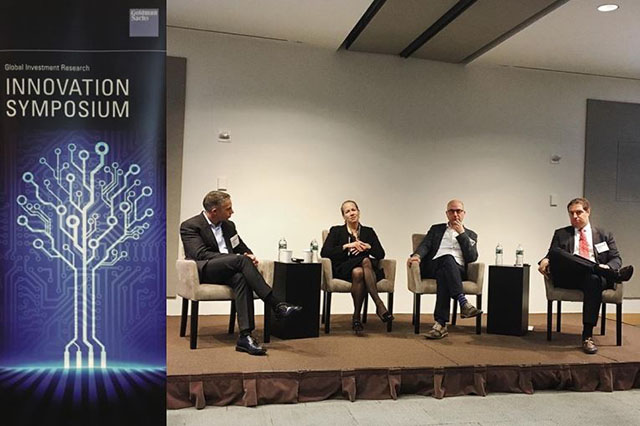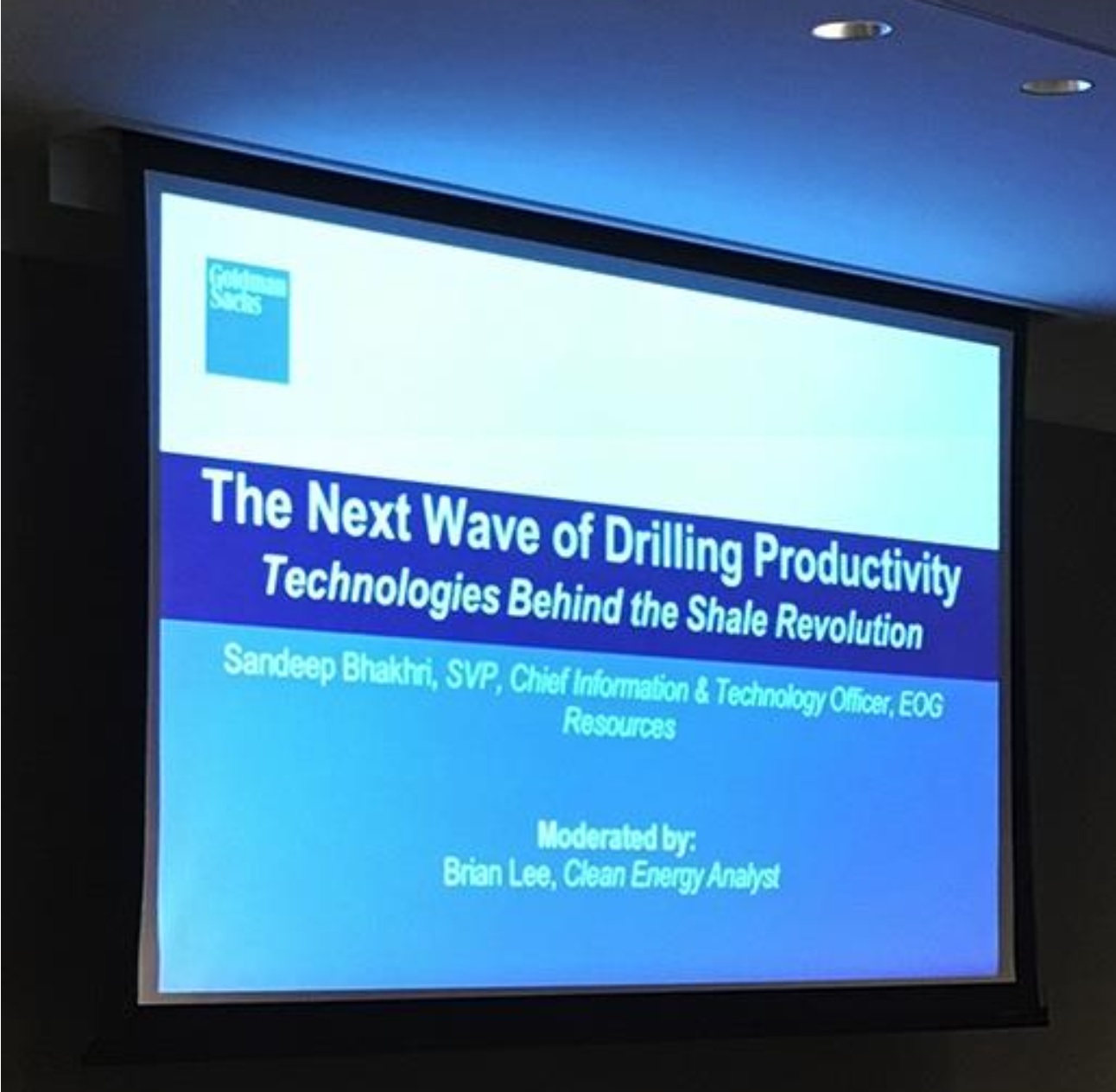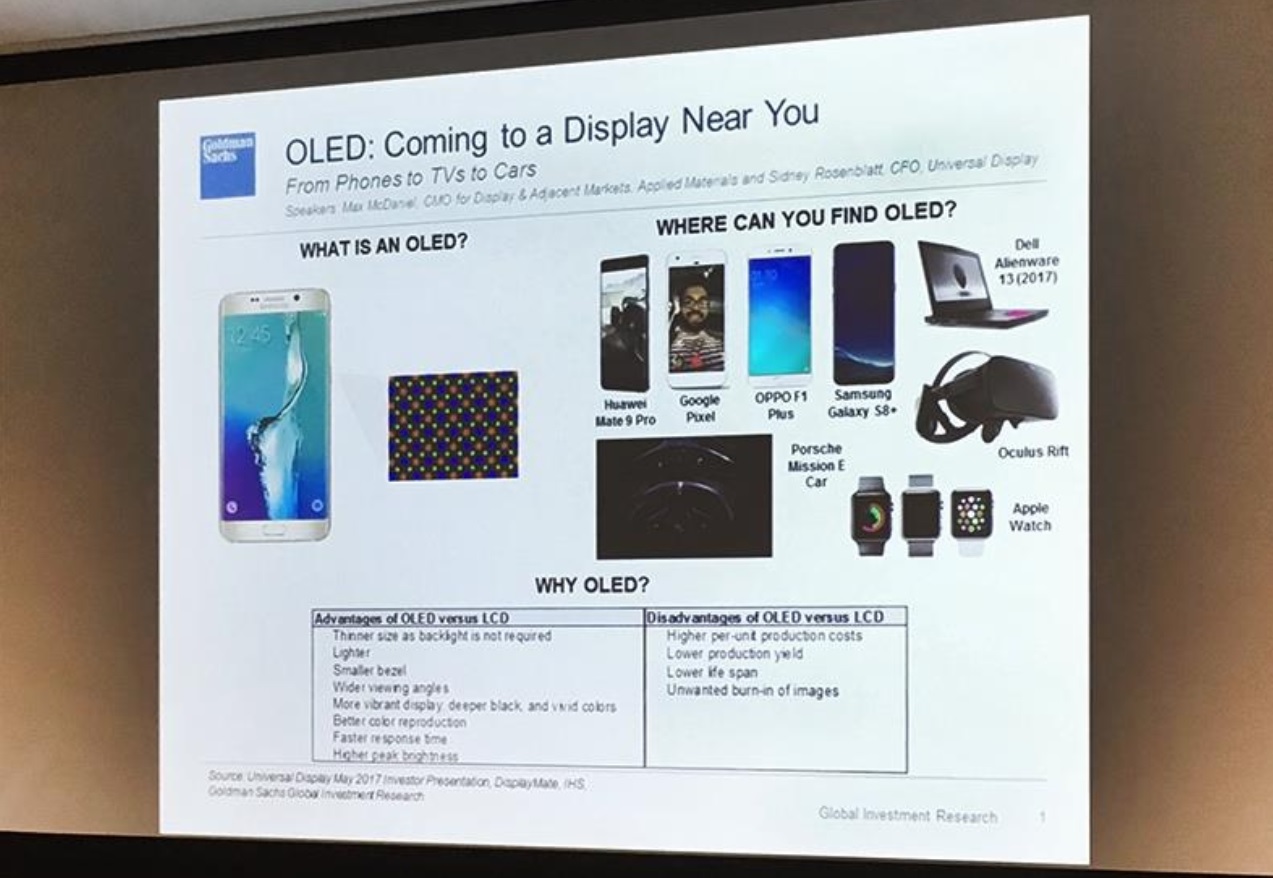
Web Developers
On June 27, the Fung Global Retail & Technology team attended the Goldman Sachs Third Annual Innovation Symposium in New York. The investor-focused event featured technology companies that are pursuing new approaches in analytics, data, AI, machine learning and more.
Below, we share five key takeaways from the event.



1) Maintaining a culture of innovation has helped EOG Resources become an industry leader and has enabled the company to develop more than 65 customized technology applications.
Sandeep Bhakhri, SVP and Chief Information and Technology Officer at EOG Resources,gave a presentation titled “The Next Wave of Drilling Productivity: Technologies Behind the Shale Revolution.” Bhakhri is a 25-year veteran of EOG Resources, an industry innovator in hydraulic fracturing using advanced techniques in data and technology. When asked how much of the company’s success was due to “good well sites” versus the culture of the company, Bhakhri said that EOG Resources has a culture of bottom-up innovation and a Darwinian approach to solving problems. He said that the company’s mind-set is “How can we make this well more productive than the last well?”
Source: Fung Global Retail & Technology
He attributed the company’s success to the fact that it builds tools within a culture of innovation that focuses on customized solutions.The tools are built by its people, for its people, using its people, Bhakhri said, in order to solve their problems. For example, the company has 20 mobile apps and 45 desktop apps that it uses to monitor its business, he said, noting that the team determines whether to continue using apps based upon 100% usage.If the tools are relevant and applicable, then the company keeps them; if not, the apps go away. He emphasized that everyone in the organization uses the tools to measure performance, from the CEO to the accountants to the engineers to the human resources staff and technicians. Bhakhri cited an example of just how relevant mobile apps are to the company’s lease operators’ productivity. EOG Resources employs 1,200 lease operators who are able to use mobile tools to track their assets and can thus respond more quickly based on priority and need. Bhakhri said that the lease operators work two weeks on, two weeks off, and that, through the tools, the company found that even when lease operators are off, they are still checking on their assets. On operators’ off days, the company expected to find only 600 operators checking in, but it found that 1,200 were actually checking in, indicating that the availability of data has changed how operators work and prompted them to take more ownership and care of assets.2) Speed, low latency of service, scale and flexibility are the major attributes that will allow 5G networks to further enable the Internet of Things (IoT) and power innovation in the future.
Volker Ziegler, Head of 5G Leadership and Chief Architect for Nokia Networks, gave a presentation titled “Welcome to a Wireless World: The What, When & Why of 5G.” Ziegler highlighted the major improvements that 5G offers over 4G, including speed, low latency of service and massive scale for IoT-connected devices.That scale will further enable applications such as virtual reality, autonomous driving and robotics, as well as the next level of products and services. He said that more than 3.5 billion people are currently connected to the Internet and that the 5G network will allow another 30 billion to be connected in the future. Specifically, 5G will deliver speeds that are 100 times faster than 4G and latency that is 50 times lower than 4G, while providing massive scalability for connecting more than 100 times more devices than there are people on the planet. The presentation slide in the photo below shows 5G by the numbers.
A slide from Volker Ziegler’s 5G presentation at the Goldman Sachs Innovation Symposium Source:Fung Global Retail & Technology
John Smee, VP of Engineering at Qualcomm Technologies, added that the technology change is evolutionary and additive to the current architecture, enabling devices to handle more data. He said that researchers are exploring opportunities and use cases for the future, asking, for example: What does the connected car of the future look like? Autonomous driving? Robotics? Virtual reality? There are use cases for the IoT across all industries that require 5G’s speed, low latency throughput and ability to handle more data. Adam Koeppe, VP of Access Technology Planning for Verizon Communications, added that 5G will allow for flexibility in the future in ways that are just being conceived now and that it will power up business models for innovation in the future.3) Digital solutions such as precision planting, autonomous tractors and drones are driving a new segment of productivity in agriculture.
Steady population growth and declining arable land per capita present long-term global food supply challenges. In asession called “How Tech Is Harvesting Data in Agriculture,” panelists discussed the new technologies that are starting to pervade the farming industry and will play a central role in improving agricultural practices and farming productivity. Ron Osborne, VP of Business Development at Farmers Edge, discussed how driverless tractors will be a major enabler for agricultural productivity. Osborne noted that autonomous tractors could become commercially viable before autonomous cars because the controlled environment of a farm, with its finite fields and few uncontrollable variables, enables vehicles to complete a repetitive set of actions with less difficulty than they would face on the road. Driverless agricultural equipment also represents the most technologically advanced solution to soil compaction, which has become a major issue for farmers, according to Osborne. Large, heavy tractors tend to compact soil, which damages the soil structure. Driverless vehicles would allow farmers to use smaller, lighter equipment with the same effectiveness and scale as the large, heavy equipment they currently rely on. Lighter vehicles would also substantially reduce the pressure on soil, helping improve yields while potentially reducing labor costs. Terry Jones, CEO of Jones Enterprises, shared how his company has adopted precision planting techniques. Precision planting allows farmers to customize seed according to the requirements of each part of a field. Jones said he was able to improve corn production by customizing seed plantation using multiseed planters attached to a tractor. He planted two types of seeds that can easily grow indifferent levels of moisture, better matching each patch of land with the optimal seed. In test runs, Jones reported an improvement of 12 bushels per acre in corn production. He said that the only thing holding back mass adoption is that the multihybrid planter is currently available only in a smaller, 16-row configuration. Jones also said that he has started to use drone services on a limited basis. Drone data can help uncover problems in a field much more quickly than a farming team would be able to if they were covering the field on foot. Jones noted that data integration offerings have been disappointing thus far. His team has yet to see a commercial offering that pulls together historical data, weather patterns and fertilizer levels in a single, usable platform.4) Massive growth of data, faster hardware and more broadly available algorithms are accelerating advances in AI capabilities and applications.
Neural networks, the underlying technology frameworks behind deep learning, have been around for decades. However, in recent years, three factors have driven AI development and capabilities: more data, faster hardware and more broadly available algorithms. In a discussion focused on AI, panelists shared their insights on the factors driving AI development. According to Peter Olausson, founder and CEO of Cognituum Artificial General Intelligence, the massive growth in the amount of unstructured data being captured by connected devices, machines and systems globally has led to greater AI developments. Olausson said that neural networks become more effective the more data they have, meaning that as the amount of data increases, the number of problems that machine learning can potentially solve using that data also increases. Mobile, the IoT, and the development of low-cost data storage and processing technology (often in the cloud) have created massive growth in the number, size and structure of available data sets. The rollout of 5G will only accelerate the rate at which data can be generated and transmitted, according to Olausson. Sage Wohns, CEO of Agolo, said that faster hardwareis also accelerating AI development. The repurposing of graphic processing units (GPUs), the availability of lower-cost computing power, particularly through cloud services, and new models for building neural networks have dramatically increased the networks’ speed and accuracy. The panelists agreed that better and more broadly available algorithms are also driving AI development. Better inputs are driving more R&D of algorithms that support deep-learning use cases. Open-source frameworks such as Google’s TensorFlow and Torch (which is used by Facebook) are allowing developers to compound their individual contributions by relying on tested base libraries as foundations. The availability of AI algorithms in open-source frameworks is certainly accelerating the development of more advanced tools, the panelists said.5) Advances in OLED technology have allowed it to gain share in the digital display market and enabled new applications, particularly on mobile.
Organic light-emitting diode (OLED) displays are being used more often in mobile applications.According to Goldman Sachs Global Investment Research, OLED’s share of the digital display market increased from 12% in the first quarter of 2015 to 21% in the first quarter of 2016.